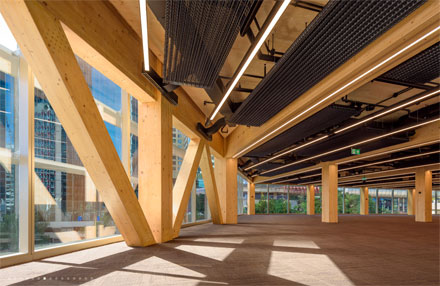
Oregon State University will receive nearly US$500,000 from the USDA to study the effects of moisture accumulation in mass timber buildings. Source: Working Forest
According to a report in the Captial Press, Oregon State University will receive nearly US$500,000 from the USDA to continue studying mass timber in commercial building design.
The latest grant comes on the heels of the Timber Innovation Act, which was recently included in the Senate version of the 2018 Farm Bill.
That legislation would create a new research and development program under the USDA for mass timber, including cross laminated panels, glue-laminated beams, and laminated veneer lumber.
Mass timber is not currently recognized as an official construction material in US building codes, leaving it without a standard rating system for quality and safety such as fire and earthquake resistance.
Researchers at OSU are now investigating the effects of moisture accumulation in mass timber buildings.
“Obviously in the Pacific Northwest, rain and moisture is a factor,” said Iain Macdonald, associate director of the TallWood Design Institute at OSU.
“There’s pretty good anecdotal evidence that these buildings perform well in moisture. … We see a need for a bit more empirical analysis of the whole thing.”
The TallWood Design Institute — formerly the National Center for Advanced Wood Products Manufacturing and Design — combines the forestry and engineering colleges at OSU and the University of Oregon’s School of Architecture and Allied Arts to focus exclusively on advancing structural wood products.
Mr Macdonald said the interest in mass timber is twofold — one, to lower the carbon footprint of buildings versus using traditional concrete and steel, and two, to reinvigorate the timber economy in rural communities that depend on forestry for jobs.





